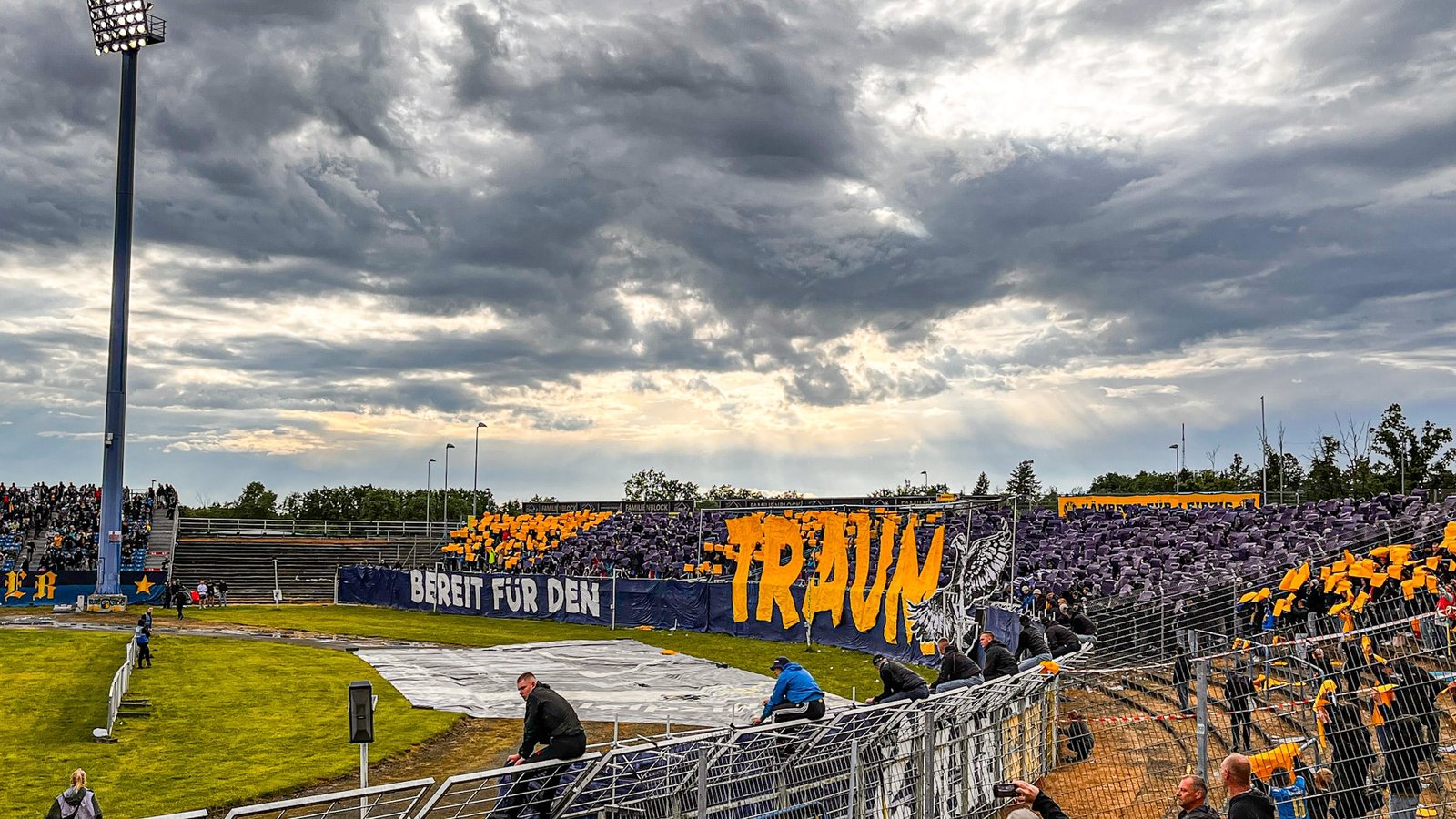Szczecin fan Mateusz Kasprzyk records his football adventures around the former GDR
Polish football traveller Mateusz Kasprzyk has just published the latest in his series of books about the game in the former GDR, Futbol na Pograniczu. Available as a PDF and e-book, ‘Football on the Border’ records in 210 pages of Polish text and atmospheric photos the journey Kasprzyk recently made along the 460-kilometre frontier dividing his native land from what was once East Germany.
“I live very close to the border, which is a few minutes from my house,” this native of Szczecin and Pogoń fan tells Libero. “From the windows on the 12th floor, I can see German wind farms. I think my curiosity was caused by the fact that while traveling around east Germany, I saw a different country than I was taught at school or saw on TV.”
Born in 1993, Kasprzyk would not have had lived under Communism before the Fall of the Berlin Wall in 1989 – but, more than 30 years later, this former sports journalist has experienced something of what it would have been like.
“Germany is associated with wealth, development, modern cities, crowds. In the East, I saw something completely different. Emptiness, abandoned houses and faces of people without prospects, disappointed. If I skip the fact that, of course, the German countryside is definitely more well-kept than Polish villages, I can say that Poland often looks more modern than the east of Germany.”

“Discovering the history and the adverse effects of the unification of Germany fascinated me. Especially since many of its former citizens are still more attached to the GDR than to the whole country. For me, football is always a mirror in which reality and the truth about a given place are shown, so getting to know local football turned out to be the best history lesson.”
“There is no other place in Europe where you can find clubs at the sixth or seventh level that used to play in European cups. The level of engagement of the fans is also incredible. Despite poor results, they still go to stadiums in large numbers.”
“I think I found real football in the former GDR. This is a stadium culture devoid of commercialism, based on affection, loyalty and pure love. It really is #againstmodernfootball. For me, it is more authentic than El Clásico.”
A graduate in journalism who now works for a car-hire company, Kasprzyk began his football travels with the Belgrade derby in 2016, “fell in love with the Balkans”, then began exploring the former GDR thanks to its proximity.

Publishing his first book in 2021, Przewodnik piłkarski po byłej NRD (‘Football Guide to the Former GDR’), Kasprzyk continued to explore the Eastern bloc on this side of the Iron Curtain, ‘from Szczecin in the Baltic to Trieste in the Adriatic, as Churchill once defined this post-war barrier.
“At the Belgrade derby, I found myself a few metres away from serious clash between Partizan fans. I jibbed into a sold-out Thessaloniki derby, rode on a fan bus in Romania and celebrated winning the Bosnian championship on the roof of the Zrinjski stadium in Mostar.”
“The most important thing is meeting people. This comes back to me in particular moments, such as when writing my books. Travelling around the GDR, I met a lot of fantastic people I can always count on. Another thing is that sometimes I like to travel alone in this part of the world. Travelling through these empty spaces calms me down, recharges my batteries, gives me time to think.”

Over two years, Kasprzyk journeyed from the divided Baltic island of Uznam/Usedom and SV Eintracht Zinnowitz tucked in from sandy beaches, right the way down to historic Saxon cities towards the Czech border. Once ruled by Bohemians, Poles and Hungarians, Görlitz doubled up as the Hungarian capital for the film, The Grand Budapest Hotel, while Zittau’s Weinaupark-Stadion is two football pitches away from Poland.
“My main goal is for my publications to reach the largest possible audience and be open to everyone. If they like the project, people can contribute on my Facebook page, Ja Volim Fudbal. I printed both parts of my guide as hard copies on regular sale. That was the greatest reward for me, and because both editions sold out, I even had to print more.”
Kasprzyk also publishes texts on his fan page and is currently working towards bigger projects connected with the former GDR. Though he has no plans for English or German versions of his publications (“I describe a lot of things from a Polish perspective”), the photographs alone, many taken by his fiancée, Kamila, convey stories from a little-visited, and certainly little-gentrified, part of Europe. With no shortage of beer, sausages and atmosphere thrown in.
Mateusz Kasprzyk, Futbol na Pograniczu (‘Football on the Border’). Available as a PDF and e-book,











